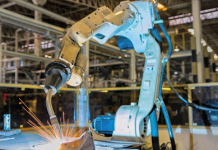
Acrylic Fabricatedparts are one of the most commonly used plastics across a variety of industries. It is known to offer increased impact resistance and outstanding optical clarity compared to glass. Therefore, many consider acrylic glass primarily as a transparent sheet. While it’s typically sold in this form and used in things like windows and sneeze guards, it’s also available in a variety of other shapes, sizes, and styles.
Apart from its strength and clarity, one of the hallmarks of acrylic is that it is easy to fabricate. That means it can be almost anything. Here are some common uses for advanced acrylic fabrication parts that go beyond simple clear sheets you may already be familiar with.
Building Signage
Acrylic is lightweight and can be manufactured in a variety of colors, shapes and styles, making it ideal for advertising and retail displays. It doesn’t just include a simple flat sign like the one you might see in a shop window or near a cash register. Acrylic can also be used to make display shelves, overhead signs that are curved or designed to look like certain letters or images, and other specialty retail enhancements. Because it is so light, it can even be carried around restaurants or taken to trade shows or other events where a company may need to showcase a product.
Literature Holders and Kiosks
Many retail stores can also use small pavilions, brochure holders or dispensers that allow customers or visitors to easily select certain materials and pick up the items they need. Obviously, one should be able to clearly see the available options, so acrylic transparency is a huge benefit in this case. In addition, it is extremely durable and strong, so retailers, visitor centers and transportation companies that can use these manufactured acrylic parts need not worry about significant wear and tear.
Why is Acrylic used so often?
Advantages of Acrylic:
- Exceptional optical clarity and transparency
- Highly resistant to temperature changes
- Up to 17 times more impact resistant than conventional glass
- Half the weight of glass and ideal for precision machining
- Highly resistant to many different chemicals
Acrylic is a very useful plastic for applications that require transparency and where high impact strength is not an issue. Acrylic is very scratch resistant compared to other clear plastics. It is a lighter weight alternative to glass and an economical substitute for polycarbonate in applications where strength is not an important factor. It can be cut into extremely fine shapes using laser cutting technology, as the material will vaporize upon impact with concentrated laser energy.
Is Acrylic Toxic?
One of the potential advantages of acrylic plastic fabrication is that it does not contain or release Bisphenol A (BPA) during hydrolysis (decomposition by contact of the material with water) Acrylic. Most government-funded research shows that BPA poses a dangerous health risk, while many industry-funded studies show little or no health risk. Despite conflicting studies on the negative effects of BPA, several types of polycarbonate have been associated with its release. This led to the emergence of BPA-free polycarbonate products (usually featured on consumer products such as cans). Acrylic is another “BPA-free” computer substitute that is non-toxic in its solid form. However, fumes from 3D printing acrylic or liquid materials used in injection molding should not be inhaled and this production process should be carried out in a well-ventilated facility to avoid the potential harmful effects of gaseous polymers.








